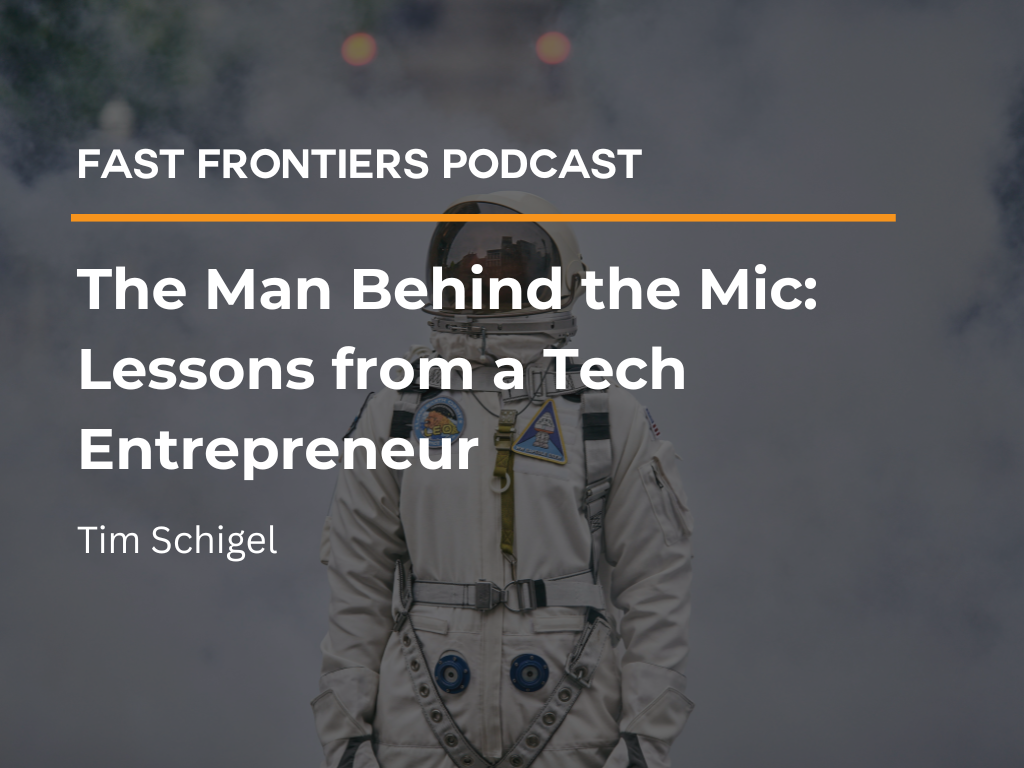We are following up on the first installment of our two-part series entitled “The Man Behind the Mic,” which features Joe Kaiser, Growth Equity Investor at Mercato Partners, turning the tables on our regular podcast host, Tim Schigel. We call this part two of the series “Ask Tim: Lessons from a Tech Entrepreneur,” where—you guessed it—we pose a plethora of questions to our leader, covering topics running the gamut from A to Z relating to all things VC.
Based on Joe’s interview with Tim, where he provided an abundance of insights into what it takes to make it in the entrepreneurial world, we compiled a list of 8 what we call “Entrepreneurial Leadership Rules” to live and operate by, which we have featured below.
Entrepreneurial Leadership Rule #1 – Employees are on a Tour of Duty
When speaking of wise strategies for the hiring process, Tim gave a nod to a concept he learned from the book The Alliance authored by Reid Hoffman and Ben Casnocha. In the book, the simile of employees being on a tour of duty is employed. Tim explained the concept, “You think of employees as being on the tour of duty. Tours of duty are usually three to five years. We can actually accomplish something, and for some people, they accomplish something at that company, and then it’s time for them to move on and get challenged somewhere else, and some have another tour of duty in the same company, or they might go to an international stint or what have you.”
This is a normal expectation, which Tim attributed to the natural growth cycle. “I think that’s all part of growth. I’m a big believer in growth, and if you’re not growing, you’re dying, and that goes for the employees, and it also goes in particular for the CEO.” He elaborated: “If the CEO is not growing, the company is not growing. So, even the CEO is going to be challenged at whatever stage they’re at. Maybe it’s a $100 million company that needs to get to $500 million or to a billion, and the strategies they use are going to be different than a company going from one to ten, but some of those growth dynamics are the same.”
Rule #2 – If You’re Not Growing, You’re Dying
Tim was clear about his ideal CEO when he stated that “The core of Refinery is really focused on [the] hyper-growth leader.” He later clarified that, when it comes to fundraising and finding investors to infuse capital, “More of my time is spent helping them figure out the growth, and if we figure out the growth, their phone starts ringing off the hook.”
He reiterated: “Investors aren’t dumb. We’re all looking for good growth companies, all of us, at every one of the stages, and so we get really good at trying to find those companies, and if you produce the growth, people will find out who you are.”
Rule #3 – You Become a Leader by Overcoming Adversity
Tim also pointed to the fact that the really stellar leaders will see adversity not only as something possible to overcome but will also understand it to be a crucial asset—a process which he shared is directly tied to his company’s moniker: “We have the name Refinery—it’s about how you’re transformed [through] the fire of adversity.”
He added that “Refining fire is a different kind of fire. It’s not incinerator fire, which just completely annihilates things. It’s not forest fire, which is indiscriminate. It’s a refiner’s fire, and a refiner’s fire gets rid of all the impurities to kind of reveal the pure gold that’s underneath, and as a leader, you become a leader by overcoming adversity.”
According to Tim, not only do true leaders survive and overcome adversity, but he attests that “Exceptional leaders thrive in that [situation].”
Rule #4 – The Best Time to Fundraise is When You Don’t Need to Fundraise
Tim also divulged some inside info on the best time to fundraise. According to Tim, “The best time to fundraise is when you don’t need to fundraise, and you’re always fundraising, so get used to it.” He didn’t mince words when he said: “If you don’t like fundraising, then don’t take the job.”
But before you let that deter you, Tim followed up this advice, offering a silver lining: “It’s part of the job, but again if you’re solving real problems for people, you’ll find that it’s really easy. If you believe in your mission, fundraising gets a lot easier.”
Rule #5 – Surround Yourself with Critics
Tim offered a word of caution during the interview, specifically addressing CEOs tempted to surround themselves with yes men and women. “You do have to be careful. I do worry, especially in this environment, that if your plan is all just momentum at all costs and your real underlying economics aren’t there, you could get caught flat-footed.”
He gave a firsthand example: “I saw this happen with companies [that] we would take public— that it was all momentum—which is good while it lasts, and the moment that reverses, any weakness in your business model all of a sudden could be the end of it. But it’s hard to do when everybody’s flattering you, and you’re raising a lot of money.”
Tim elaborated on why he feels keeping critical minds around you is essential. “I want people around me, advisors and board members that are still being critical and objective and challenging, not just popping champagne all the time but saying, ‘Are we sure that really works? Are we sure that customers are going to keep paying us? Are we sure we’re going to get those margins we thought we were?’ So, it’s more art than science probably, but I think the first step is just being aware of it [and asking yourself] is the value proposition, execution, and growth of the business matching up with the myth and the mystique of the business when things are great?”
Rule #6 – Use Zoom as a Tool
Tim also unveiled during his interview his affinity for Zoom. He explained how he has seen the technology operate as a super resource of sorts firsthand: “One of our CEOS, who by default basically records everything—all their meetings, internal and external—[will often] share them with me or with the board to say, ‘What do you think?’” Tim shared.
This opened Tim’s eyes to how effective Zoom could be when used as a tool for instruction. “I was like, ‘Wow, I never really thought of using this as a coaching tool, but it’s super effective for it!’ You can really say, ‘Hey, did you notice in that meeting you kind of had this burr in your bonnet and you were really pushing for this and that, and I could see somebody over there squirming that clearly had an opinion, but you never really asked them for it and you just kind of steamrolled them.’ [To which they might reply] ‘Oh my gosh, did I? I didn’t notice!’ That could be super helpful to somebody.”
Rule #7 – Trying to Transplant Silicon Valley Elsewhere Doesn’t Work
It’s the basic bloom where you are planted mentality. Tim is blazing a trail to prove that it is possible, especially when finding skilled talent is no longer limited to a certain zip code. Keeping an open mind and seeking out experts—wherever they can be found—unleashes so much potential for diversification, and yes, innovation.
According to Tim, “At the end of the day, investing and venture investing, in particular, is about finding the market leaders—not the number two or number three—you’re trying to find the market leader, the one that’s going to be the market leader.” And that leader doesn’t have to be in Silicon Valley.
Rule #8- If You Have Three to Five OKRs, One of Them Should Be about Your Culture and Your People
Tim provided a final lesson by pointing how the extreme importance of picking the right people. “I always say my bookshelves are filled with leadership and psychology books, not technology books. The technology stuff is kind of easy. It’s people [that make or break your company and culture].”
There is much more to learn from Tim—which we did in this two-part series—to ensure that you don’t miss out on all of the insightful info, head over to listen to both parts of this series here.



